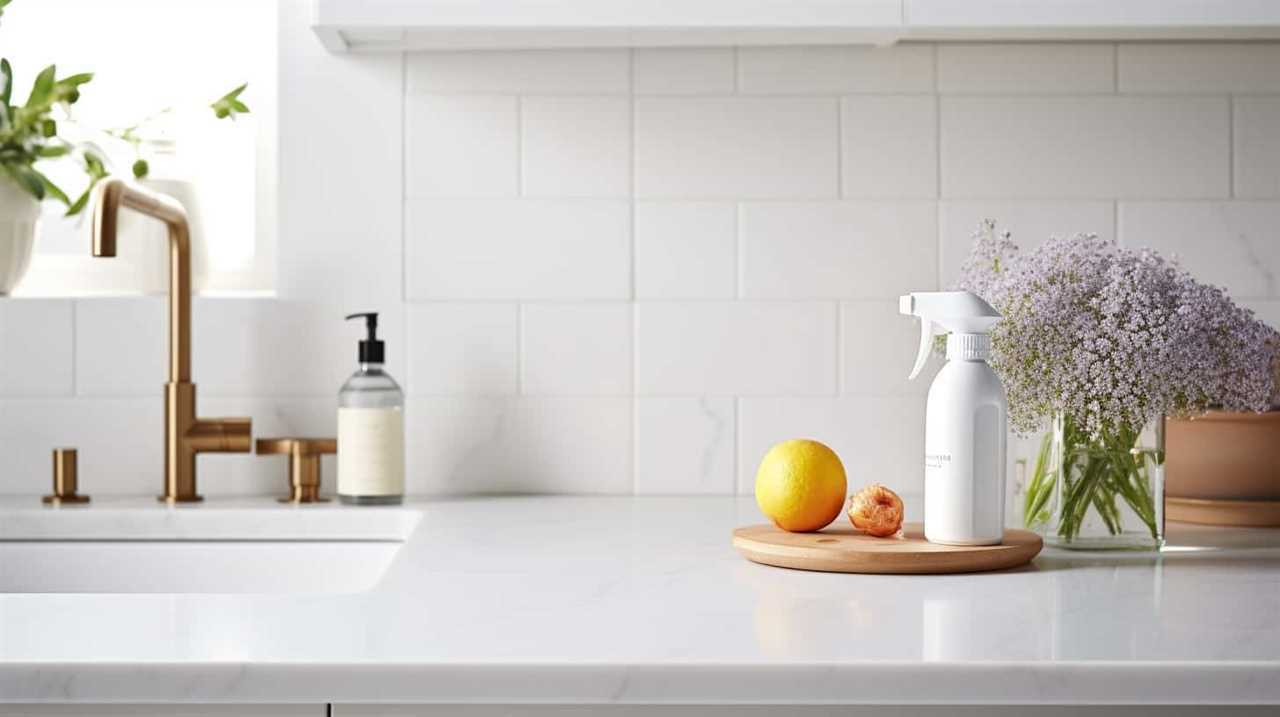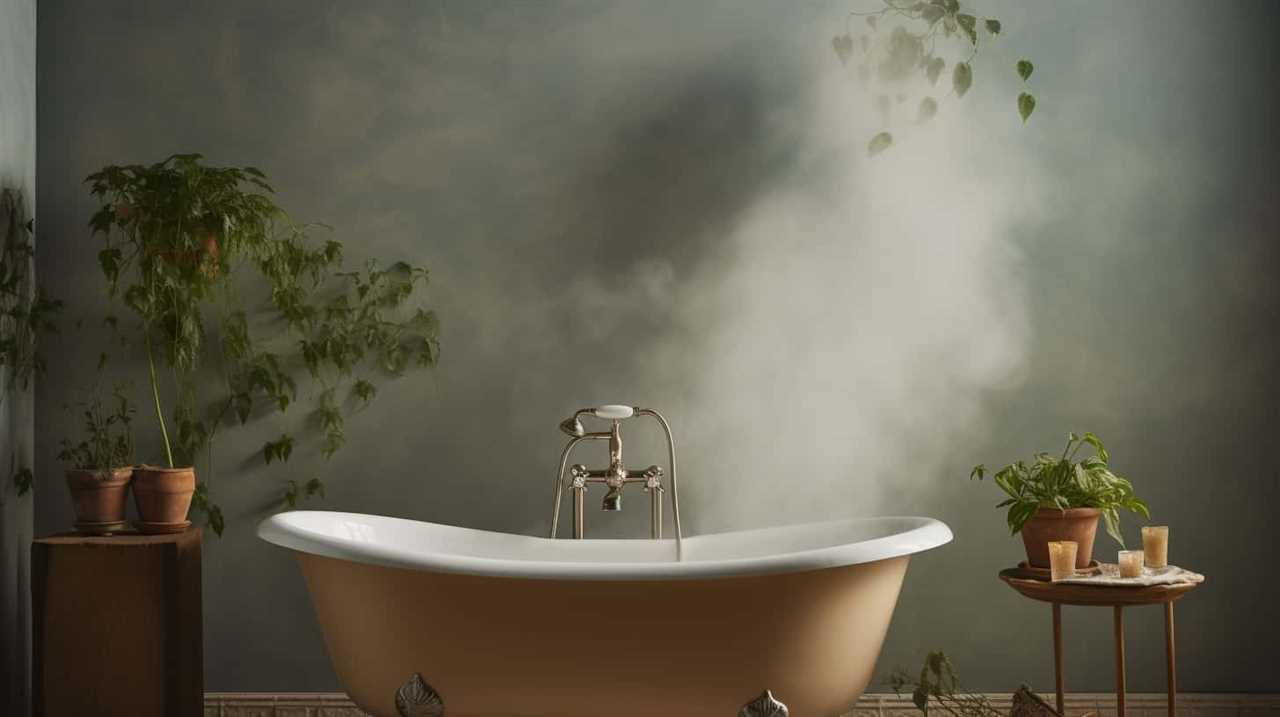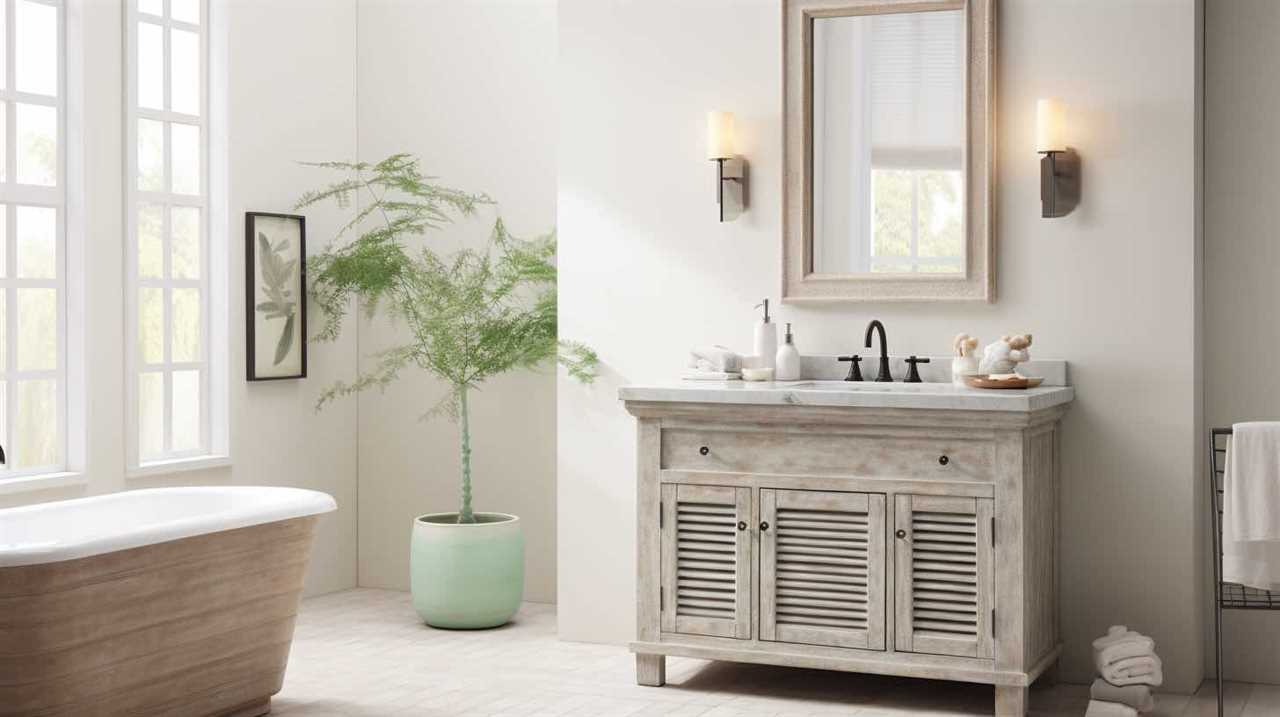Are you aware that a frequent issue that many homeowners encounter is a bathroom that has a sewer-like odor?
We’re here to help you understand why this happens and how to fix it.
In this article, we’ll explore the common causes, such as poor ventilation, drainage issues, damaged sewer pipes, and more.
With our informative and concise guide, you’ll gain the mastery needed to tackle this unpleasant issue and enjoy a fresh-smelling bathroom once again.

Key Takeaways
- Poor ventilation and lack of proper cleaning can lead to mold growth and bacterial buildup, causing sewer smells in the bathroom.
- Inadequate airflow and clogged drains can trap odors in the bathroom, emphasizing the importance of proper ventilation and drainage.
- Damaged or blocked sewer pipes can result in sewage leakage and odors, highlighting the need for regular maintenance and prompt repairs.
- A dry P-trap or missing trap seal can cause sewer odors, and it is essential to keep the P-trap filled with water and inspect and replace damaged trap seals.
Common Causes of Sewer Smell in Bathrooms
One common cause of sewer smell in bathrooms is the presence of a few potential culprits. Mold prevention in bathrooms is essential to avoid unpleasant odors. Mold thrives in moist environments, such as bathrooms, and can emit a musty smell that resembles sewer gas. To prevent mold growth, ensure proper ventilation by using exhaust fans or opening windows to allow air circulation. Additionally, keeping the bathroom clean and dry, wiping down surfaces regularly, and fixing any leaks promptly can help prevent mold growth.
DIY solutions for eliminating bathroom odors include using baking soda to absorb odors, vinegar to disinfect surfaces, and hydrogen peroxide to remove mold stains. These simple remedies can help tackle the root causes of sewer smells in bathrooms.
Transitioning into the subsequent section about poor ventilation and drainage issues, it’s important to address these issues to further eliminate sewer odors.
Poor Ventilation and Drainage Issues
Now let’s delve into the issue of poor ventilation and drainage, as it directly contributes to the persistent sewer smell in our bathrooms. Here are some key factors that can lead to this problem:

- Inadequate airflow: Insufficient ventilation can trap odors in the bathroom, allowing the sewer smell to linger.
- Clogged drains: Accumulation of hair, soap scum, and other debris in the drains can hinder proper water flow, resulting in foul odors.
- Improper cleaning techniques: Using harsh chemicals or neglecting regular cleaning can lead to the buildup of residue and bacteria, causing unpleasant smells.
- Faulty plumbing installation: Poorly installed or damaged plumbing pipes can allow sewer gases to escape into the bathroom.
These issues highlight the importance of proper maintenance and attention to detail when it comes to bathroom ventilation and drainage. Addressing these problems can help eliminate the sewer smell and create a more pleasant and hygienic environment.
However, if the odor persists, it may indicate damaged or blocked sewer pipes, which we’ll discuss in the next section.
Damaged or Blocked Sewer Pipes
When dealing with the persistent sewer smell in our bathroom, one common cause can be damaged or blocked sewer pipes. Damaged sewer pipes can occur due to various reasons, such as age, tree root intrusion, or ground shifting. Over time, these pipes can crack, collapse, or become misaligned, allowing sewage to leak into the surrounding soil. When this happens, the foul odor of sewage can find its way into our bathroom through the damaged pipes.
Similarly, blocked sewer pipes can also lead to the unpleasant smell. A blockage can occur due to various factors, including debris buildup, grease accumulation, or foreign objects obstructing the flow of wastewater. As a result, the sewer odor can be trapped and emitted into our bathroom.

It’s essential to address damaged or blocked sewer pipes promptly to eliminate the unpleasant odor and prevent further damage to the plumbing system.
Dry P-Trap or Missing Trap Seal
We may encounter a dry P-trap or a missing trap seal when trying to determine the cause of the sewer smell in our bathroom. The P-trap is a U-shaped pipe located beneath the sink or shower drain that’s designed to hold a small amount of water. This water acts as a barrier, preventing sewer gases from entering our living spaces.
However, if the P-trap dries out or the trap seal is missing, sewer odors can infiltrate our bathroom. To prevent sewer odor caused by a dry P-trap or missing trap seal, here are some essential maintenance tips:
- Regularly run water in unused drains to keep the P-trap filled.
- Inspect and replace damaged or deteriorated trap seals.
- Ensure proper installation of P-traps during plumbing repairs or renovations.
- Consider using a biodegradable drain cleaner to remove any buildup that may interfere with the trap seal’s effectiveness.
Sewer Gas Leaks and Plumbing Problems
To address sewer gas leaks and plumbing problems in our bathroom, we should investigate potential causes and implement appropriate solutions.

Sewer gas leaks can occur due to damaged sewer lines or faulty plumbing fixtures. It’s crucial to detect these leaks promptly to prevent health risks and unpleasant odors.
To detect sewer gas leaks, we can use specialized equipment like smoke testing or sewer gas detection devices. These tools help locate the source of the gas and determine the extent of the problem.
Once the leaks are identified, it’s essential to fix them promptly. Hiring a professional plumber is recommended for complex plumbing issues.
Frequently Asked Questions
What Are Some DIY Solutions to Fix a Sewer Smell in the Bathroom?
DIY solutions to fix a sewer smell in the bathroom include checking for common causes like dry traps, clogged vents, or damaged plumbing. By addressing these issues, you can eliminate the unpleasant odor.

Can a Sewer Smell in the Bathroom Be Harmful to Your Health?
A sewer smell in the bathroom can have potential health risks. Common causes include clogged drains, damaged sewer pipes, or a dried-out p-trap. It’s important to address the issue promptly to ensure a safe and healthy environment.
How Can You Prevent a Dry P-Trap or Missing Trap Seal in the Bathroom?
To prevent a dry p-trap or missing trap seal in the bathroom, we can ensure regular use of all plumbing fixtures, check for leaks or cracks, and pour water down unused drains. These simple steps help maintain a properly functioning plumbing system and control bathroom odors.
Are There Any Warning Signs to Look Out for Before a Sewer Gas Leak Occurs in the Bathroom?
Warning signs of a sewer gas leak in the bathroom include foul odors, gurgling sounds, and slow drains. To prevent this, regularly check and maintain the p-trap, ensure proper ventilation, and seek professional help if needed.
Is It Possible for a Sewer Smell in the Bathroom to Originate From Outside the House?
It is possible for a sewer smell in the bathroom to originate from outside the house. The causes of sewer smell outside can include cracked sewer lines or faulty plumbing. To locate the sewer smell outside, a thorough inspection of the plumbing system is necessary.

Conclusion
In conclusion, it’s important to address the sewer smell in bathrooms as it can be caused by various factors such as poor ventilation, damaged pipes, dry P-traps, or gas leaks.
By understanding these common causes, we can take the necessary steps to rectify the issue and ensure a pleasant bathroom experience.
Remember, a well-maintained and odor-free bathroom is essential for a clean and healthy environment.
So, let’s tackle this problem head-on and say goodbye to that unpleasant sewer smell.











